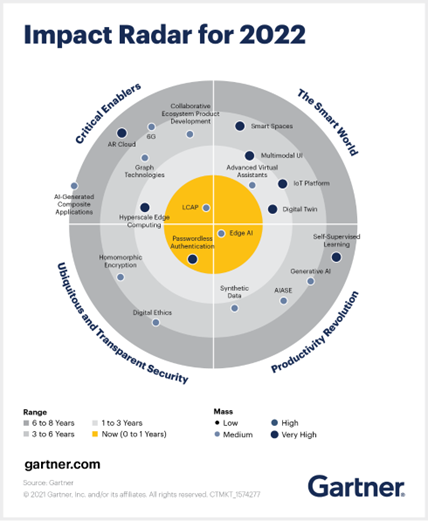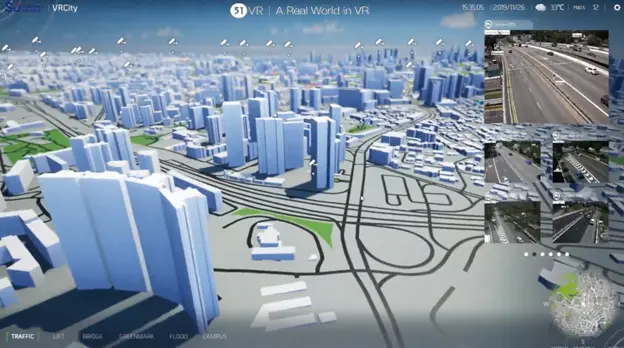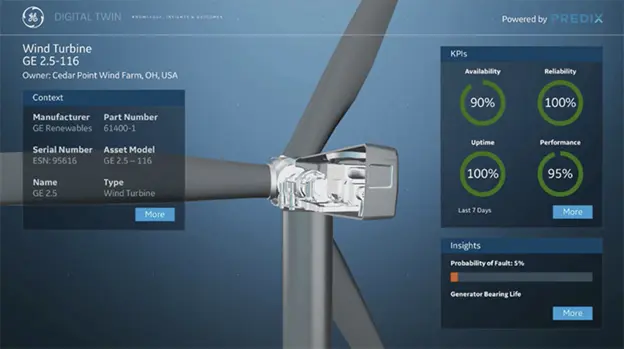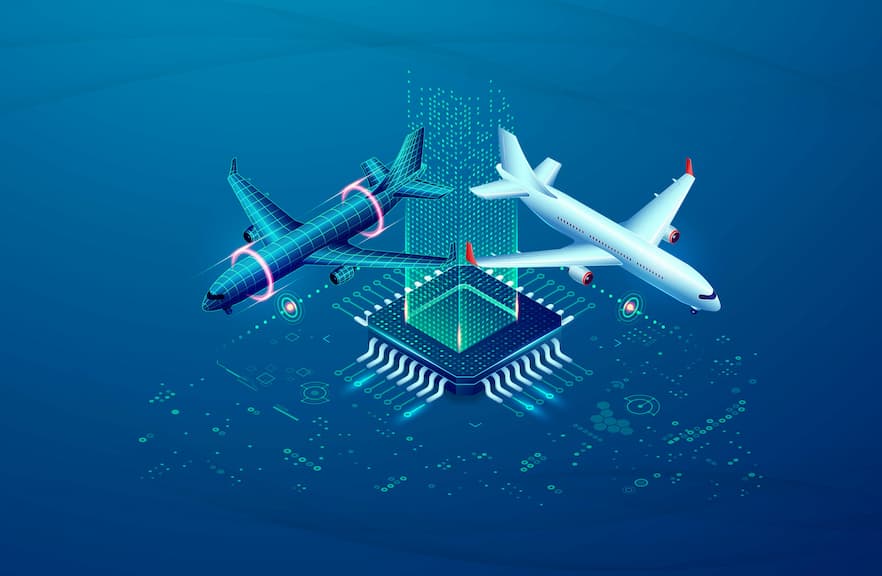In 1970, following the explosion of Apollo 13’s oxygen tank and damage to the main engine, NASA faced the arduous task of diagnosing and solving a problem of failing spacecraft and bringing the astronauts home from an object 200,000 miles away from earth. What came to NASA’s rescue was multiple simulators that rapidly adapted and modified the simulations to mimic the conditions of the damaged spacecraft, which helped the mission control to test various strategies and maneuver the spacecraft safely home. Little did we realize that this would be a perfect example of a “digital twin” in action 32 years before the word was even coined.
Fast forward to the present day. Digital twins are emerging as a necessity among businesses since they encompass the entire lifecycle of an asset or process and are the foundation of connected products and services. Digital twins are contributing a lion’s share to the digital transformation of many industries that have traditionally monitored and controlled their assets manually. Digital twins are merging the world of the internet of things (IoT), artificial intelligence, and data analytics. Thanks to IoT, implementing digital twins has become cost-effective and less complex. Digital twins are predicted to impact businesses since Gartner has estimated that various companies will widely adopt digital twins in the next 3–6 years.

What Is a Digital Twin?
A digital twin can be described as a digital representation of a physical object, process, or service. A digital twin is a computer program that uses real-world data to generate simulations, which can predict the performance of a product or process. A digital twin offers users a glimpse into what is happening, or what can happen, with physical assets now and far into the future. The advancement of machine learning and big data have further pushed digital twins as a must-have in modern engineering, which will help drive innovation and enhance performance.
Simulation Versus Digital Twin
Although there are similarities between a simulation and a digital twin, there are some critical differences in how a digital twin is designed and used. For example, a simulation usually doesn’t have real-time data feedback loops. In contrast, a digital twin is designed for a two-way flow of information, and the states of the digital twin are constantly updated to reflect their real-life value accurately.
With a simulation being a static model, this often leads to simulators drifting from real life, but the models built on top of a digital twin are always up to date. While a simulation is mostly product-focused and mainly used during the design phase, a digital twin is business-focused, impacting all stages of a product life cycle. A simulation typically studies one particular component, but a digital twin can run multiple simulations to analyze various components, systems, interfaces, and processes.
Types of Digital Twins
Component Twins
A component twin is the basic level of twinning. Component twinning enables the design and evaluation of distinct characteristics of a component like durability, resilience, energy efficiency, etc. These characteristics examine how components behave under static or thermal stress and in other real-life scenarios.
Product Twins
A product twin is a virtual replica of the entire product, which can reveal how individual components work together under various conditions. A product twin provides insights on enhancing performance and reliability. Product twinning can also be used to design new technical solutions instead of creating multiple prototypes, which, in turn, shortens development time and allows for faster iterations.
Process Twins
A process digital twin creates models of “the best way” to run a process in each environment — often called “the golden batch.” This approach helps answer important questions like:
- How long will it take to produce a particular product?
- How much will it cost?
- Which machine should perform specific functions?
- Which steps can be automated?
- Is the production of a particular item feasible at all?
Additionally, visualizing the production process makes it easier to prevent costly downtimes.
System Twins
A digital twin of the system brings visibility to complex interconnections and interdependencies of products and processes. The twinned system can be as large as a multistory building, electrical grid, or even a whole city, which can be viewed as “a system of systems.”

Real-World Applications of a Digital Twin
Manufacturing and Energy Sector
In the manufacturing sector, using digital twins increases product transparency by providing visibility to interfaces. It helps in breaking silos and makes it easier to discover weak links, quality issues, etc. The entire manufacturing process can be monitored in real time, which can reduce production costs, time, and wastages. Thanks to real-time feedback, mass customization is possible by tailoring products to each customer’s needs. AR-enabled twins can help engineers access virtual engineering models and overlay these models over the physical equipment on which they are performing maintenance.
For instance, GE has saved more than $1.6 billion through real-time monitoring capabilities of almost 1.2 million digital twins of jet engines, wind farms, oil rigs, power generation equipment, etc. Agder Energi, a Norwegian electric utility, uses Microsoft Azure Digital Twins to identify ways to operate its electrical grid more efficiently through distributed energy resources, device controls, and predictive forecasting.

Healthcare
Real-time health monitoring of patients through digital twins has had a significant impact during the pandemic. In some cases, tracking people and infection in real-time were done efficiently using a digital twin model of patients. Surgery training simulation procedures on a digital twin has helped medical professionals de-risk critical operating procedures. Digital twins of patients have enabled customizing medical equipment to suit human anatomy. Connected medical systems and tools ensure product integrity and measure patient outcomes.
GE and startups in Finland are building wireless tools that could constantly stream heartbeat, blood pressure, respiration, and other information into the cloud, where software can analyze it and alert doctors to anomalies. The Living Heart Project is dedicated to developing and validating highly accurate personalized digital human heart models. This enables pharma companies to customize complex medical devices for individual patients, making them compatible with the individual’s unique anatomical systems.
Supply Chain
BMW and DHL are building digital twins of their plants and warehouses to improve process efficiency. Digital twins of warehouse layouts and road networks will lead to efficient warehouse design that maximizes operational performance and enables efficient product delivery. This also leads to tracking and analyzing key performance indicators, such as packaging performance, fleet management, and route efficiency.
Automotive
Digital twins have become imperative to modern self-driving capable cars like Tesla. So, it isn’t surprising that the carmaker has a digital twin for every vehicle sold. Additionally, sensors from thousands of cars continuously stream data into each car’s twin in the factory. AI interprets the data and determines whether a vehicle works as intended or needs maintenance. For maintenance issues, Tesla’s software integrations are so thorough that software updates can fix problems — for instance, adjusting the hydraulics to compensate for a rattling door.
By merging AI and IoT, Tesla can constantly learn from the real world and optimize each car individually in real time. AR-enabled twins are already boosting buying experience in the digital age. OEMs and dealers are witnessing a boost in revenue by building a 360-degree view of the customers, including driver preferences and attributes, to upsell/cross-sell their products and services.
Urban Infrastructure
The SoFi Stadium in Los Angeles and even Shanghai and Singapore have been replicated using digital twins. It is used in forecasting the behavior of the systems in case of a catastrophe, monitoring traffic flow, and improving public services. For example, Singapore’s digital twin has been built for a developer and the local government. Integrating information on buildings, transport, parks, drainage, and more enables city operators to monitor everything from traffic, building operations, and bridge maintenance to simulate floods for disaster planning.
Digital Twin and AI
Digital twins can provide high-quality inputs needed to create AI and ML models to suggest improvements to operations. Once operations are improved, a digital twin also enhances and provides higher-quality inputs to models to suggest further improvements. Such systems can quickly learn and aid in detecting abnormal behavior and recommending corrective action like thermal cooling.
The models can accurately predict how products will behave under various conditions and forecast failures, enabling us to perform preventive maintenance, thus reducing huge costs and downtimes. In addition, digital twins can also predict the utility of products through real-time usage metrics, which opens various reusing and reselling opportunities.
Key Takeways
Digital twin technology has already become an industry norm and integrating AI and ML into a digital twin can increase its benefits multifold. The use cases of embedding AI in a digital twin can range from predicting product failures to creating a self-sufficient intelligent machine. Even though most physical assets can be modeled, most of these models drift away from real-world data and results.
ML-based modeling comes to the rescue by accurately modeling the physical asset, thanks to real-time data feedback. Additionally, developing these models demands little knowledge and expertise on physical assets since most of the pattern recognition is done by the ML model itself. Environmental, usage, and user-based features can be factored in an ML model, whereas models based on the principles of Physics are primarily rigid. Each instance of a digital twin can have a customized model, a game changer for personalized recommendation and diagnostic systems.



